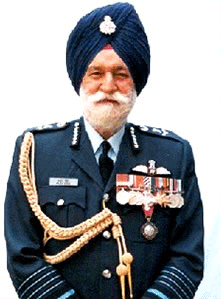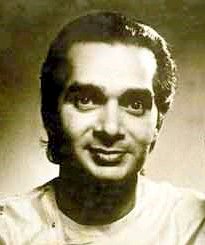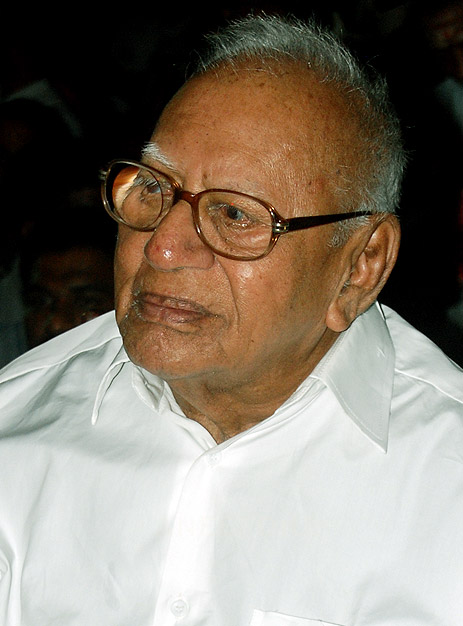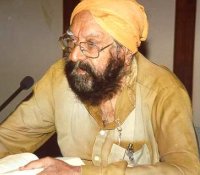List of Padma Vibhushan award recipients on:
[Wikipedia]
[Google]
[Amazon]
The












Padma Vibhushan
The Padma Vibhushan ("Lotus Decoration") is the second-highest civilian award of the Republic of India, after the Bharat Ratna. Instituted on 2 January 1954, the award is given for "exceptional and distinguished service". All persons without ...
is the second highest civilian award
This list of civil awards and decorations is a partial index to articles about notable civil awards and decorations. It excludes Law enforcement awards and honors and ecclesiastical decorations, which are covered by separate lists. See :Civil aw ...
of the Republic of India
India, officially the Republic of India (Hindi: ), is a country in South Asia. It is the List of countries and dependencies by area, seventh-largest country by area, the List of countries and dependencies by population, second-most populous ...
. Instituted on 2 January 1954, the award is given for the "exceptional and distinguished service", without distinction of race, occupation, position, or sex. The Padma Vibhushan award recipients are announced every year on Republic Day
Republic Day is the name of a holiday in several countries to commemorate the day when they became republics.
List
January 1 January in Slovak Republic
The day of creation of Slovak republic. A national holiday since 1993. Officially cal ...
and registered in ''The Gazette of India
''The Gazette of India'' is a public journal and an authorised legal document of the Government of India, published weekly by the Department of Publication, Ministry of Housing and Urban Affairs. As a public journal, the ''Gazette'' prints offi ...
''a publication released weekly by the Department of Publication, Ministry of Urban Development
The Ministry of Housing and Urban Affairs (MoHUA) is a ministry of the Government of India with executive authority over the formulation and administration of the rules and regulations and laws relating to the housing and urban development in Ind ...
used for official government notices. The conferral of the award is not considered official without its publication in the ''Gazette''. Recipients whose awards have been revoked or restored, both of which require the authority of the President, are also registered in the ''Gazette'' and are required to surrender their medals when their names are struck from the register. , none of the conferments of Padma Vibhushan have been revoked or restored. The recommendations are received from all the state and the union territory governments, the Ministries of the Government, the Bharat Ratna
The Bharat Ratna (; ''Jewel of India'') is the highest Indian honours system, civilian award of the Republic of India. Instituted on 2 January 1954, the award is conferred in recognition of "exceptional service/performance of the highest orde ...
and previous Padma Vibhushan award recipients, the Institutes of Excellence, the Ministers, the Chief Ministers and the Governors of State, and the Members of Parliament including private individuals. The recommendations received during 1 May and 15 September of every year are submitted to the Padma Awards Committee, constituted by the Prime Minister
A prime minister, premier or chief of cabinet is the head of the cabinet and the leader of the ministers in the executive branch of government, often in a parliamentary or semi-presidential system. Under those systems, a prime minister is ...
. The committee recommendations are later submitted to the Prime Minister and the President
President most commonly refers to:
*President (corporate title)
* President (education), a leader of a college or university
* President (government title)
President may also refer to:
Automobiles
* Nissan President, a 1966–2010 Japanese ...
for the further approval.
When instituted in 1954, the Padma Vibhushan was classified as "Pahela Varg" (Class I) under the three-tier Padma Vibhushan awards; preceded by the Bharat Ratna, the highest civilian award, and followed by "Dusra Varg" (Class II), and "Tisra Varg" (Class III). On 15 January 1955, the Padma Vibhushan was reclassified into three different awards; the Padma Vibhushan, the highest of the three, followed by the Padma Bhushan
The Padma Bhushan is the third-highest civilian award in the Republic of India, preceded by the Bharat Ratna and the Padma Vibhushan and followed by the Padma Shri. Instituted on 2 January 1954, the award is given for "distinguished service ...
and the Padma Shri
Padma Shri ( IAST: ''padma śrī''), also spelled Padma Shree, is the fourth-highest civilian award of the Republic of India, after the Bharat Ratna, the Padma Vibhushan and the Padma Bhushan. Instituted on 2 January 1954, the award is conf ...
. The criteria includes "exceptional and distinguished service in any field including service rendered by Government servants" but excluding those working with the Public sector undertakings
A state-owned enterprise (SOE) is a government entity which is established or nationalised by the ''national government'' or ''provincial government'' by an executive order or an act of legislation in order to earn profit for the governme ...
with the exception of doctors and scientists. The 1954 statutes did not allow posthumous awards but this was subsequently modified in the January 1955 statute. The award, along with other personal civil honours, was briefly suspended twice in its history; for the first time in July 1977 when Morarji Desai
Morarji Ranchhodji Desai (29 February 1896 – 10 April 1995) was an Indian independence activist and politician who served as the 4th Prime Minister of India between 1977 to 1979 leading the government formed by the Janata Party. During his ...
was sworn in as the fourth Prime Minister. The suspension was rescinded on 25 January 1980, after Indira Gandhi
Indira Priyadarshini Gandhi (; ''née'' Nehru; 19 November 1917 – 31 October 1984) was an Indian politician and a central figure of the Indian National Congress. She was elected as third prime minister of India in 1966 and was al ...
became the Prime Minister. The civilian awards were suspended again in mid-1992, when two Public-Interest Litigations were filed in the High Courts
High may refer to:
Science and technology
* Height
* High (atmospheric), a high-pressure area
* High (computability), a quality of a Turing degree, in computability theory
* High (tectonics), in geology an area where relative tectonic uplift ...
questioning the civilian awards being "Titles" per an interpretation of Article 18 (1) of the Constitution
A constitution is the aggregate of fundamental principles or established precedents that constitute the legal basis of a polity, organisation or other type of entity and commonly determine how that entity is to be governed.
When these pr ...
. The awards were reintroduced by the Supreme Court
A supreme court is the highest court within the hierarchy of courts in most legal jurisdictions. Other descriptions for such courts include court of last resort, apex court, and high (or final) court of appeal. Broadly speaking, the decisions of ...
in December 1995, following the conclusion of the litigation.
The recipients receive a ''Sanad'' (certificate) signed by the President and a medal with no monetary grant associated with the award. The decoration is a circular-shaped toned bronze medallion in diameter and thick. The centrally placed pattern made of outer lines of a square of side is embossed with a knob embossed within each of the outer angles of the pattern. A raised circular space of diameter is placed at the centre of the decoration. A centrally located lotus flower is embossed on the obverse side of the medal and the text "Padma" written in Devanagari
Devanagari ( ; , , Sanskrit pronunciation: ), also called Nagari (),Kathleen Kuiper (2010), The Culture of India, New York: The Rosen Publishing Group, , page 83 is a left-to-right abugida (a type of segmental writing system), based on the ...
script is placed above and the text "Vibhushan" is placed below the lotus. The Emblem of India
The State Emblem of India is the national emblem of the Republic of India and is used by the union government, many state governments, and other government agencies. The emblem is an adaptation of the Lion Capital of Ashoka, an ancient scul ...
is placed in the centre of the reverse side with the national motto, "Satyameva Jayate
Satyameva Jayate (, ) is a part of a ''mantra'' from the Hindu scripture ''Mundaka Upanishad''. Following the independence of India, it was adopted as the national motto of India on 26 January 1950, the day India became a republic.
It is inscri ...
" (Truth alone triumphs) in Devanagari Script, inscribed on the lower edge. The rim, the edges and all embossing on either side is of white gold with the text "Padma Vibhushan" of silver gilt. The medal is suspended by a pink riband in width. It is ranked fourth in the order of precedence of wearing of medals and decorations.
The first recipients of the Padma Vibhushan were Satyendra Nath Bose, Nandalal Bose
Nandalal Bose (3 December 1882 – 16 April 1966) was one of the pioneers of modern Indian art and a key figure of Contextual Modernism.
A pupil of Abanindranath Tagore, Bose was known for his "Indian style" of painting. He became the principa ...
, Zakir Husain, Balasaheb Gangadhar Kher
Balasaheb Gangadhar Kher (24 August 1888 – 8 March 1957) was an Indian politician who served as the prime minister of Bombay (1937 - 1939, 1946 - 1947) and the first chief minister (then called Premier) of Bombay State (1947 - 1952). He was aw ...
, V. K. Krishna Menon, and Jigme Dorji Wangchuck
Jigme Dorji Wangchuck ( dz, འབྲུག་རྒྱལ་པོ་ འཇིགས་མེད་རྡོ་རྗེ་དབང་ཕྱུག་མཆོག་, ; 2 May 1928 – 21 July 1972) was the 3rd Druk Gyalpo of Bhutan.
He began ...
, who were honoured in 1954. , the award has been bestowed on 314 individuals, including seventeen posthumous and twenty-one non-citizen recipients. Some of the recipients have refused or returned their awards; P. N. Haksar
Parmeshwar Narayan Haksar (4 September 1913 – 25 November 1998) was an Indian bureaucrat and diplomat, best known for his two-year stint as Prime Minister Indira Gandhi's principal secretary (1971–73). In that role, Haksar was the chie ...
, Vilayat Khan, E. M. S. Namboodiripad
Elamkulam Manakkal Sankaran Namboodiripad (13 June 1909 – 19 March 1998), popularly known as EMS, was an Indian communist politician and theorist, who served as the first Chief Minister of Kerala in 1957–1959 and then again in 1967–1969. ...
, Swami Ranganathananda
Swami Ranganathananda (15 December 1908 – 25 April 2005) was a Hindu swami of the Ramakrishna Math order. He served as the 13th president of the Ramakrishna Math and Mission.
Biography
Swami Ranganathananda, (pre-monastic name Shankaran Kutt ...
, and Manikonda Chalapathi Rau
Manikonda Chalapathi Rau (also known as MC and Magnus) (1910 – 25 March 1983) was an Indian journalist and an authority on the Nehruvian thought. Rau was editor of the English-language daily National Herald of Lucknow for over thirty years fr ...
refused the award; the family members of Lakshmi Chand Jain
Lakshmi Chand Jain (1925–2010) was a political activist and writer. Later, he served at various times as a member of the Planning Commission, as Indian High commissioner to South Africa, as a member of the World Commission on Dams (WCD) a ...
(2011) and Sharad Anantrao Joshi
Sharad Anantrao Joshi (3 September 1935 – 12 December 2015) was an Indian politician who founded the Swatantra Bharat Paksh party and ''Shetkari Sanghatana'' (farmers' Organisation), He was also a Member of the Parliament of India representin ...
(2016) declined their posthumous conferments, and 1986 recipient Baba Amte
Murlidhar Devidas Amte, popularly known as Baba Amte, (26 December 1914 – 9 February 2008) was an Indian social worker and social activist known particularly for his work for the rehabilitation and empowerment of people suffering from leprosy ...
and 2015 recipient Parkash Singh Badal
Parkash Singh Badal ( pa, ਪ੍ਰਕਾਸ਼ ਸਿੰਘ ਬਾਦਲ; born 8 December 1927) is an Indian politician who was Chief Minister of Punjab state from 1970 to 1971, from 1977 to 1980, from 1997 to 2002, and from 2007 to 2017. He ...
returned theirs honour in 1991 and 2020 respectively. Most recently on 25 January 2022, the award has been bestowed upon four recipients; Prabha Atre
Prabha Atre (born 13 September 1932) is an Indian classical vocalist from the Kirana gharana. She has been awarded all three of the Padma Awards by the Government of India.
Early life and education
Atre was born to Abasaheb and Indirabai Atr ...
, Radheshyam Khemka, Bipin Rawat
General Bipin Rawat (16 March 1958 – 8 December 2021) was an Indian military officer who was a four-star general of the Indian Army. He served as the first Chief of Defence Staff (CDS) of the Indian Armed Forces from January 2020 u ...
and Kalyan Singh
Kalyan Singh (5 January 1932 – 21 August 2021) was an Indian politician and a member of the Bharatiya Janata Party (BJP). He served twice as the Chief Minister of Uttar Pradesh and as a Member of Parliament. He was the Chief minister of Utt ...
.https://www.padmaawards.gov.in/padmaawardees2022.pdf
Numbers of recipients











Lists of recipients
Padma Vibhushan Award recipients in the years 1954 - 1959
Padma Vibhushan Award recipients in the years 1960 - 1969
Padma Vibhushan Award recipients in the years 1970 - 1979
Padma Vibhushan Award recipients in the years 1980 - 1989
Padma Vibhushan Award recipients in the years 1990 - 1999
Padma Vibhushan Award recipients in the years 2000 - 2009
Padma Vibhushan Award recipients in the years 2010 - 2019
Padma Vibhushan Award recipients in the years 2020 - 2029
Explanatory notes
;Non-citizen recipients ;Posthumous recipientsReferences
Bibliography
* * *External links
* * {{DEFAULTSORT:Padma Vibhushan award recipients * Lists of Indian award winners